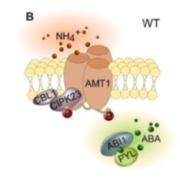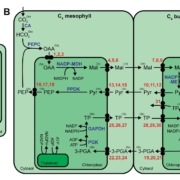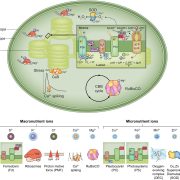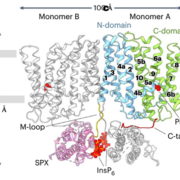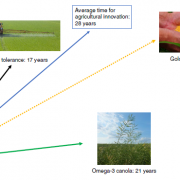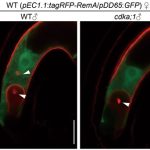Increading Fe and Zn concentrations in wheat flour
 Human malnutrition results from the lack of essential mineral micronutrients. In particular, iron deficiency might cause anaemia and stunted development in children, while zinc deficiency might reduce immunity to infectious diseases. In bread wheat, iron and zinc are located in the embryo and aleurone. These parts of the seed are removed during the industrial-scale roller milling of white flowers, leading to a loss of 65-75% of both iron and zinc. Efforts were made in wheat lines for zinc and iron biofortification thanks to the overexpression of rice NICOTIANAMINE SYNTHASE 2 (OsNAS2) gene cassette and the wheat VACUOLAR IRON TRANSPORTER 2 gene (TaVIT2-D). In this work, Harrington et al., show the results of combining the endosperm expression of TaVIT2-D together with the constitutive expression of OsNAS2 in different wheat cultivars (VIT-NAS transgenic plants). The authors proved that the combined expression of the two genes not only improved total zinc availability and iron distribution, but also did not hinder plant growth. This work demonstrates that the combined effects of two genes might improve nutritional quality beyond what is possible by conventional breeding. (Summary by Eva Maria Gomez Alvarez, @eva_ga96). Plant Physiol. 10.1093/plphys/kiac499
Human malnutrition results from the lack of essential mineral micronutrients. In particular, iron deficiency might cause anaemia and stunted development in children, while zinc deficiency might reduce immunity to infectious diseases. In bread wheat, iron and zinc are located in the embryo and aleurone. These parts of the seed are removed during the industrial-scale roller milling of white flowers, leading to a loss of 65-75% of both iron and zinc. Efforts were made in wheat lines for zinc and iron biofortification thanks to the overexpression of rice NICOTIANAMINE SYNTHASE 2 (OsNAS2) gene cassette and the wheat VACUOLAR IRON TRANSPORTER 2 gene (TaVIT2-D). In this work, Harrington et al., show the results of combining the endosperm expression of TaVIT2-D together with the constitutive expression of OsNAS2 in different wheat cultivars (VIT-NAS transgenic plants). The authors proved that the combined expression of the two genes not only improved total zinc availability and iron distribution, but also did not hinder plant growth. This work demonstrates that the combined effects of two genes might improve nutritional quality beyond what is possible by conventional breeding. (Summary by Eva Maria Gomez Alvarez, @eva_ga96). Plant Physiol. 10.1093/plphys/kiac499


